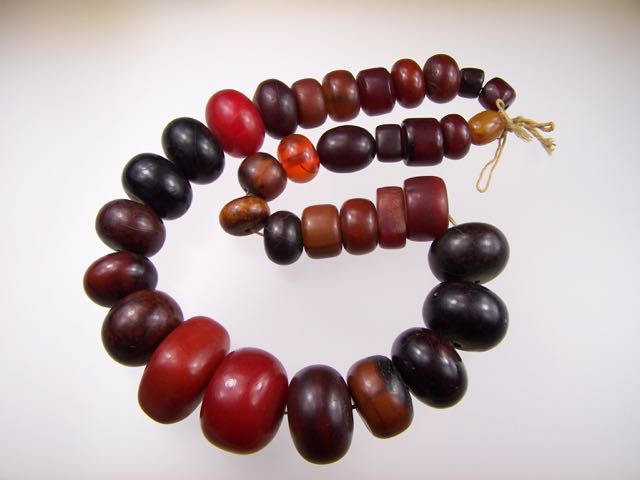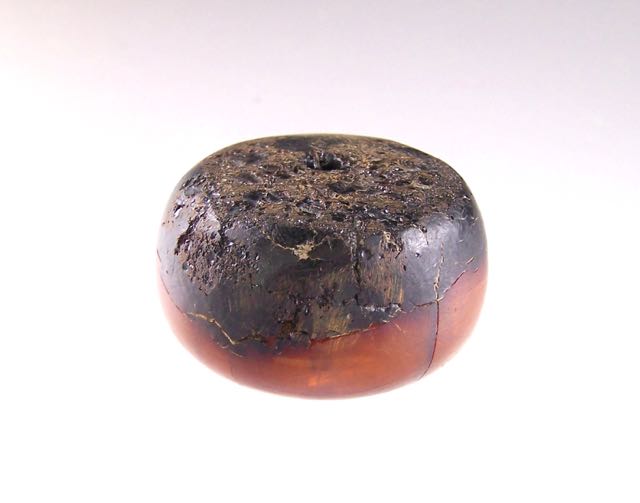| Some answers | |||||
| Re: Re: A distinguishing feature -- calumw789 | Post Reply | Edit | Forum | Where am I? | |
07/24/2015, 09:08:20
The oven I have doesn't have a window, and I don't have an exact answer about how much time it takes to start seeing a color change, but after 10-15 minutes at 350 F (177 C) the beads are darker. You may be able to see this at 5 minutes. They will continue to darken as long as they are heated, until they become pretty much black. I don't know how long it will take to go black - and it may be a long time, like a week. If I decide to blacken a bead I'll let you know - and I'll start by using a higher temperature to speed it up.
Second - the beads I've been experimenting with are opaque to start with. I have not used any translucent beads in the heat experiments, since I don't have any amber-colored, translucent or semi- translucent beads to play with. Phenolic resins could be dyed with many colors, so the almost clear cherry-colored beads may have been dyed that color to start with. The semi-translucent, cloudy marbled effect that you refer to - could have been a bead that was dyed that color originally, or could have been heat treated. I just don't know how prevalent heat was used to change color vs. dye in the original mix. Of course, a dyed bead could also be heated to darken it as well.
I'm concentrating on the beads that I'm pretty sure were traded to Africa, where I'm also pretty sure the heat treatment was done. I'm showing here another strand I purchased recently. The lightest red beads - not sure if they were heated or dyed that color to start with. For the darker beads, all the way to black, I'm 99.99% sure they were heated. You can see one bead near the bottom of the strand that was scorched on one side, as evidence. Close-up of that bead in the second picture.


|